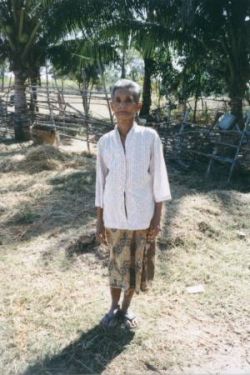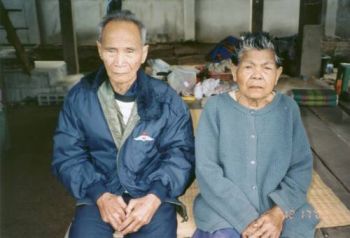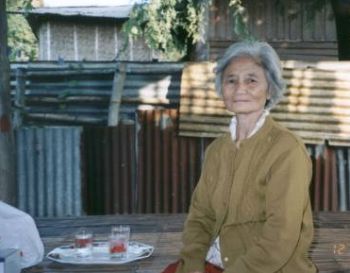Steve and Jemjahn go to Thailand, 2003
5. Jem's Old Home in the Village
10. Impressions of the Village
22. Thai People, My Impressions
23. Photography
We brought two cameras, an inexpensive Canon 35mm point-and-shoot and a Sony movie camera.
I have
an older digital camera, but at only 1.5 megapixels, it was clearly
inadequate. As much as I wanted to get a new digital camera for the
trip, I decided to stay with film because:

1. Except for the best, most expensive digital cameras today, they all have shutter lag Ė a brief span of time between pressing the shutter and the image being recorded. For pictures of houses or mountains, shutter lag doesnít matter. For pictures of people, especially active people (like children people), it matters a lot, and those are the kinds of pictures I like to take.
2. If the photos were to be viewed only on a computer monitor, even the 1.5 MP camera would have been good enough. But we expected to send reprints back to Thailand, again making film the first choice.
3. I couldnít see spending $750 for a digital camera that didnít meet all my needs when new ones with more capability and lower prices seem to come out every week.
The movie camera was an older analog model, but Sony engineers put their heart and soul into it. Itís small (about the same size as a film point-and-shoot), rugged and of obvious high quality. A gift from my brother Saul, it was simple to use, just about a point-and-shoot, yet capable of producing fine quality video. Again, thereíll be a day when I get a digital movie camera, but this analog one seemed just fine for a novice like me.
So how did it work out?
The
little Canon took great pictures. Through ten r olls
of film, not one of the prints was under- or over-exposed. Only one
print had a problem with the flash, and only one photo was out of focus
(aimed at a small object, a difficult shot for an autofocus camera). The
camera was small and easy to take everywhere, and I did.
olls
of film, not one of the prints was under- or over-exposed. Only one
print had a problem with the flash, and only one photo was out of focus
(aimed at a small object, a difficult shot for an autofocus camera). The
camera was small and easy to take everywhere, and I did.
That said, if I could do it over, Iíd have bit the bullet during packing our bags and also taken along my 25-year-old Canon single-lens-reflex for the portrait shots of the villageís old folks. They always cooperated with Jemís request for a photo, sometimes combing their hair, sitting up straight and posing for the camera, knowing, I think, that it might be the photograph their children would forever have to remember them by.
That old SLR took great photos, but it was large and heavy, and its external flash was alone bigger than the point-and-shoot camera that fit into a pocket of my trousers.
I see
what I should have done: brought the little point-and-shoot to carry
around for unexpected shots, and brought the full-sized SLR for portraits.
unexpected shots, and brought the full-sized SLR for portraits.
Back at home, I saved each photo in TIFF format, which requires the most hard drive space, about 5MB per file for my 4x6 prints, but is archival, not compressing the photo at all. The new 120GB hard drive swallowed up all the photos without a burp. (Years from now, Iíll be reading this again and chuckle that there was a time in the past when a 120GB hard drive was considered large.)
But all things considered, photography during the trip was a success. We came back with plenty of photos and video to jog old memories in years to come.
next: Language